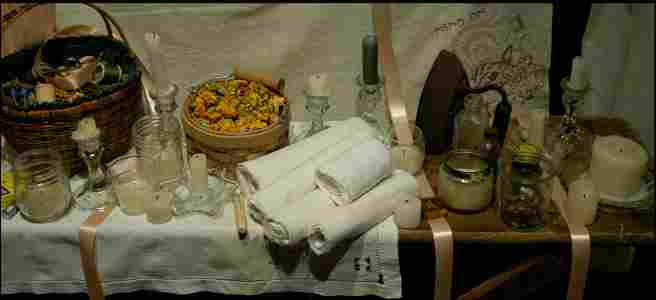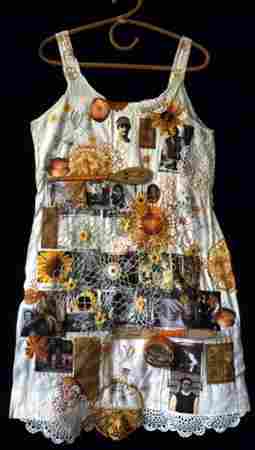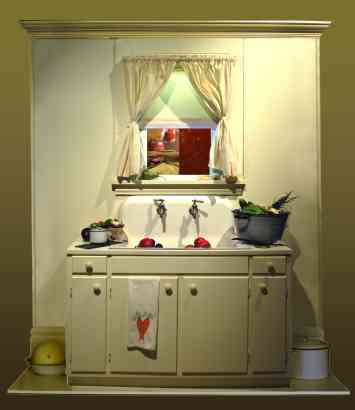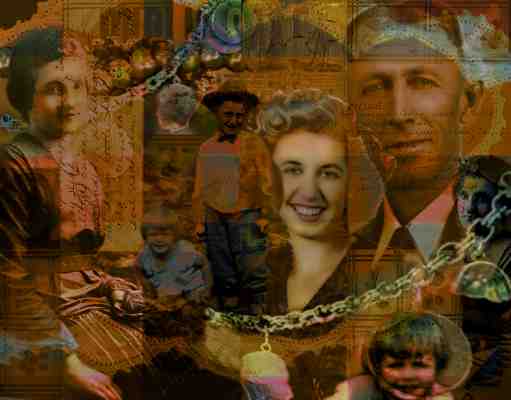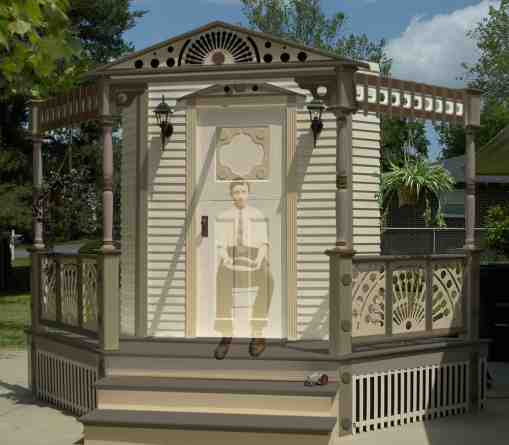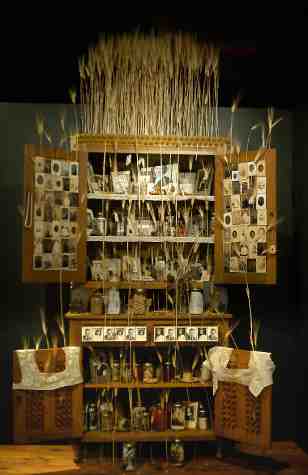| “Offerings,”
2002 – 2003, video installation, 6’2” wide by 7’
tall by 4’ deep wood cabinet, iron sink, water, fake produce, kettles,
dishes, tea towels A
few of us have gardens, and we plant token amounts of flowers and vegetables.
My father is still a farmer at heart, planting not one but several ambitious
gardens. We never had to buy vegetables at any time of the year. His way
of nurturing and providing for us was to grow things. In doing so he was
also nurtured by the memory of helping his own mother in the garden when
he was a child. (He lost his mother at the age of 12.) Thus gardening
has become not only a way of storing up for the future, but a link to
the past. Agriculture is our foundation, watching crops marks the seasons.
Here, the cycle of growing is the cycle of life, a spiritual journey.
The piece
has been shown in 2 exhibits this year, and reviewed as part of the exhibit,
“After Whiteness,” in the online publication “New City
Chicago.” Said Michael Workman of this piece,
“Her
mixed-media video, ‘Offerings,’ depicts a kitchen in a typical
white home at the edge of suburbia, sink piled with the bounty of the
fields. In this fantasy of white bountifulness a core of purity promising
‘beauty, success, sophistication and love.’ Not to mention
the profound sense of safety evinced by such a perpetually enclosed view
of the world in which the message that cleanliness is close to godliness
cuts between the pristine of whiteness and the culturally reinforced connotations
of ‘uncleanliness’ implied by the color black.” (Michael
Workman, “Eye
Exam: Whitewash,” New City Chicago, October 2003.) |


